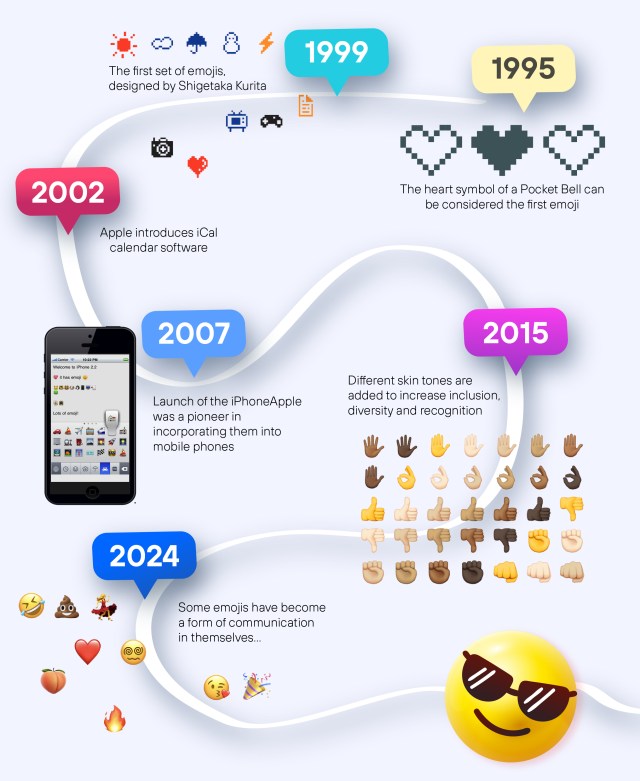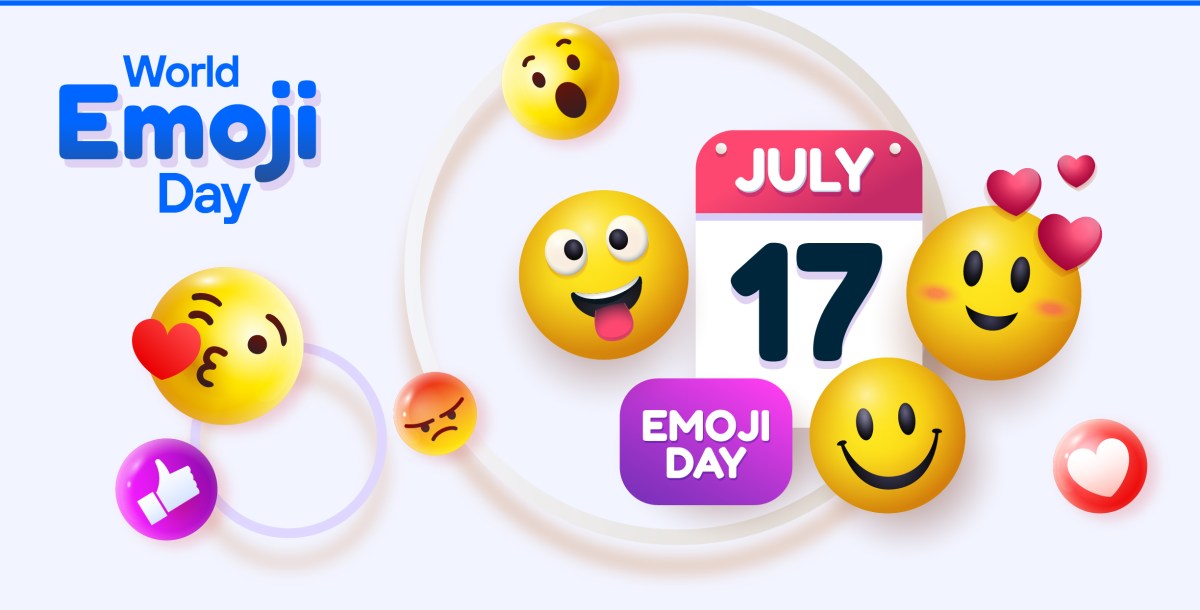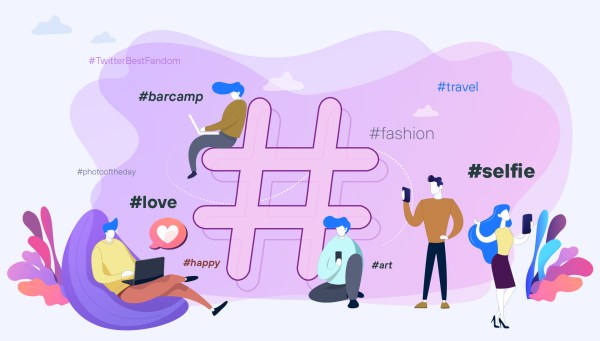World Emoji Day is an unofficial celebration that was established in 2014 and is commemorated every 17 July.
World Emoji Day: 17 July
What is the reason why this is the day chosen to commemorate this very 21st century event?
For a simple reason: July 17th is the date that appears in the calendar emoji of most of the main platforms, although not in all of them, as you can check in Emojipedia.
But let’s take a closer look… Is that date random? Why that day and not another one? Well, because on that day in 2002 Apple presented its iCal calendar programme for Macs at the MacWorld exhibition.
This ephemeris even has its own profile in the social network X (formerly known as Twitter), as we can see in this publication of the tenth edition of the day, in the year 2023, which explains the original meaning of some of the emojis less understood by users:
The idea for the celebration came from the founder of Emojipedia, Australian Jeremy Burge.
What is an emoji
We are explaining the reasons why an emoji day is celebrated and why the commemoration takes place on a particular day. But, what exactly is an emoji?
As defined by the RAE, an emoji is a “small digital image or icon used in electronic communications to represent an emotion, an object, an idea, etc”.
It comes from the eponymous Japanese word, which etymologically comes from conjugating the e (drawing) with moji (character or writing sign).
Emoji and emoticons, are they the same thing?
The terms emoji and emoticon are sometimes used as synonyms. But are they?
If we follow the RAE, the definition of emoticon would be a “symbol formed by keyboard signs, which represents a facial expression and is used in electronic messages to express the mood of the sender or the tone of the message”, coming, in this case, from emoticon, a mixture of emotion (emotion) and icon (icon).
If we look at the definition of both words, we see that, although they are very similar concepts, they are not strictly identical. Emojis are images that represent emotions or ideas, while emoticons are combinations of signs or letters that also convey ideas, and so on.
Therefore, although they can be used as synonyms, they are not exactly the same.

Origin and evolution of emojis
As we have already mentioned, the term emoji is a Japanese term that originated in the 90s of the last century.
Its roots lie precisely in emoticons, which had become popular with online communications and text messages.
Although there is no consensus about it, the heart symbol among the options of a pager model called Pocket Bell can be considered the first emoji, in 1995.
It was not until four years later, in 1999, that the first set of emojis arrived, designed by the Japanese Shigetaka Kurita, who was inspired by his country’s manga in which characters are often drawn with symbolic representations known as manpu.
Although originally only available in Japan, they were later incorporated into the Unicode standard to broaden and expand their availability.
In 2007, Apple again became part of the history of emojis. In this case, the apple company was a pioneer in adopting them in mobile phones, incorporating them at the launch of the iPhone and thus popularising them on a global scale.
An escalation in popularity that led to the introduction in 2015 of different skin tones to increase inclusion, diversity and recognition of the different inhabitants of the planet in a phenomenon that had long since abandoned its Asian origin to make the leap to the whole world.









